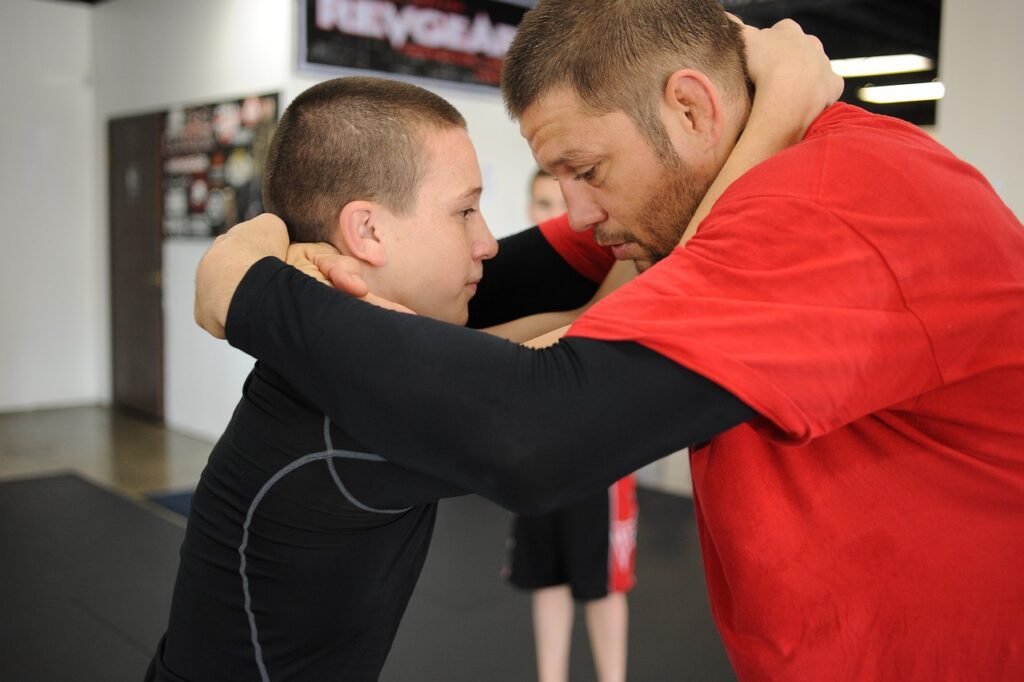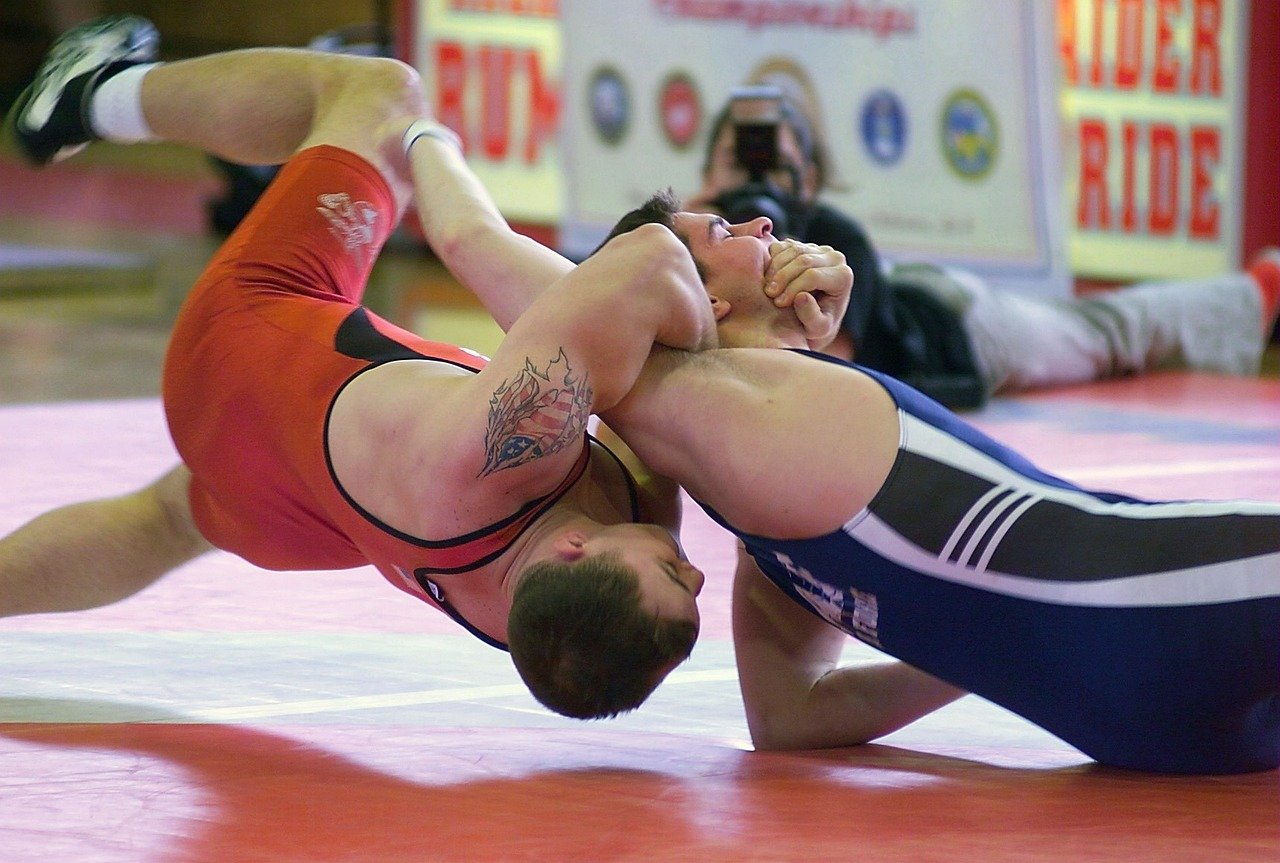In “Mastering The Overhook And Underhook,” you’ll dive into the essential grappling techniques that can elevate your game on the mat. This article focuses on the mechanics, strategies, and applications of both overhooks and underhooks in various combat sports. Whether you’re a seasoned practitioner or a beginner, you’ll find valuable insights and practical tips to help you control your opponent and improve your overall performance. Get ready to enhance your skills and gain a deeper understanding of these pivotal techniques!
Mastering The Overhook And Underhook
Have you ever wondered how grapplers and fighters gain control over their opponents with seeming ease? The secrets often lie in mastering the overhook and underhook. These techniques are foundational elements that can drastically improve your grappling skills, whether you’re a Brazilian Jiu-Jitsu aficionado, a wrestler, or even a mixed martial artist.
In this article, you’ll delve into the nuances of the overhook and underhook, and by the end, you’ll have a comprehensive understanding of how to use these techniques to your advantage. We’ll cover everything from definitions and basic purposes to advanced strategies and drills. So, let’s get started!
What Are Overhooks and Underhooks?
Understanding the basics is the first step to mastery.
Overhook
The overhook, also known as a whizzer, involves placing your arm over and around your opponent’s arm. This position allows you to exert control over your opponent’s upper body, restrict their movements, and prevent certain attacks.
Underhook
The underhook is essentially the opposite of the overhook. In this move, you place your arm underneath and around your opponent’s arm. It offers you control and leverage, often used to set up throws, takedowns, or various submissions.
Comparison Table: Overhook vs. Underhook
| Feature | Overhook | Underhook |
|---|---|---|
| Arm Placement | Over and around opponent’s arm | Under and around opponent’s arm |
| Control | Restricts opponent’s movements | Provides leverage and control |
| Common Usage | Defense | Offense and setups |
Why Are They Important?
You might be asking, “Why should I invest time in mastering these techniques?” The answer lies in their versatility and effectiveness.
Control
Both the overhook and underhook give you a significant amount of control over your opponent’s movements. They can dictate the pace and direction of the match, allowing you to implement your strategy effectively.
Versatility
These techniques are not limited to just one type of fighting style. They are prevalent in wrestling, Brazilian Jiu-Jitsu, judo, and MMA. This cross-disciplinary relevance makes them indispensable skills for any serious grappler.
Offensive and Defensive Benefits
Mastering both techniques provides you with a balanced toolkit for both offensive and defensive scenarios. Whether you need to prevent a takedown, set up a throw, or transition into a submission, these techniques are your go-to moves.

The Basic Mechanics
Before diving into advanced techniques, it’s essential to understand the basic mechanics.
Executing the Overhook
- Entry: Hook your arm over your opponent’s arm and secure it by gripping your own wrist or by reaching around their back.
- Pressure: Apply downward pressure. This disrupts their balance and limits their ability to counter or escape.
- Adjustment: Keep your elbow tight against their arm to prevent them from slipping out.
Executing the Underhook
- Entry: Slip your arm under your opponent’s arm, wrapping it around their upper torso.
- Leverage: Pull your opponent close to you, using the underhook to control their upper body.
- Positioning: Keep your body close and your head positioned to minimize risks of headlocks or counters.
Execution Steps: Overhook vs. Underhook
| Step | Overhook | Underhook |
|---|---|---|
| Entry | Hook arm over opponent’s arm | Slip arm under opponent’s arm |
| Pressure | Apply downward pressure | Pull opponent close |
| Adjustment | Keep elbow tight | Keep body close and head positioned |
Common Mistakes and How to Avoid Them
Understanding common mistakes can significantly speed up your learning curve.
Overhook Mistakes
- Loose Grip: A weak grip allows your opponent to break free easily.
- Poor Positioning: Incorrect body alignment can result in a loss of control.
Avoidance Tips
- Always maintain a firm grip.
- Ensure your elbow stays tight to their arm.
Underhook Mistakes
- Overcommitting: Reaching too deep can make you vulnerable to counters.
- Improper Head Position: Poor head placement can lead to headlocks or other counters.
Avoidance Tips
- Keep your arm at a comfortable depth where you can maintain control without overextending.
- Position your head against your opponent to minimize risks.

Advanced Techniques and Strategies
Once you’ve mastered the basics, you can explore advanced strategies to elevate your game.
Overhook to Takedown
- Setup: Utilize the overhook to off-balance your opponent.
- Transition: Shift your weight and angle, creating an opportunity for a throw or a takedown.
Underhook to Submission
- Setup: Use the underhook to control your opponent’s posture.
- Transition: Move into a position where you can initiate a submission, such as a guillotine choke or an armbar.
Drills to Improve Your Overhook and Underhook
Practicing specific drills can enhance your muscle memory and make these techniques second nature.
Overhook Drills
- Shadow Drilling: Practice the overhook movement without a partner to perfect your form.
- Partner Drilling: Work with a partner to apply and maintain the overhook in various scenarios.
Underhook Drills
- Wall Drills: Use a wall as an opponent to focus on your arm placement and leverage.
- Live Sparring: Incorporate underhooks in live sparring sessions to gain real-world application experience.

Physical Conditioning for Enhanced Performance
Strengthening your body can make executing overhooks and underhooks more effective.
Upper Body Strength
Focus on exercises that improve your grip and arm strength, such as pull-ups and deadlifts.
Core Stability
A strong core provides better balance and control. Planks, Russian twists, and medicine ball workouts are excellent choices.
Mental Preparation and Strategy
Physical prowess alone won’t make you a master of the overhook and underhook. Mental preparation and strategic thinking are equally important.
Visualization
Visualize scenarios where you successfully execute overhooks and underhooks. This mental practice can significantly enhance your performance.
Strategy Development
Study your opponents and develop strategies that incorporate overhooks and underhooks based on their fighting style. Some might be more susceptible to underhooks, while others might struggle with overhooks.
Incorporating Overhook and Underhook into Your Overall Game Plan
It’s one thing to excel at overhooks and underhooks, but integrating them into your overall strategy is another level of mastery.
Flow Drills
Practice transitioning between different techniques smoothly. For instance, during a wrestling session, you might transition from an underhook to a single-leg takedown.
Situation Training
Simulate specific scenarios where overhooks and underhooks are crucial. This could be defending against a double-leg takedown using an overhook or setting up a throw with an underhook.
Lessons from the Pros
Learning from professionals can provide invaluable insights.
Notable Examples
- Khabib Nurmagomedov: Renowned for his use of the overhook in controlling opponents on the ground.
- Daniel Cormier: A master of underhooks for setting up devastating takedowns.
Key Takeaways
- Khabib’s Overhook: Notice how he uses the overhook to immobilize his opponent’s arm, limiting their offensive options.
- Cormier’s Underhook: Observe how Daniel uses the underhook to pull his opponent close and set up his signature takedowns.
Conclusion
Mastering the overhook and underhook can significantly elevate your grappling capabilities, providing you with control, versatility, and a range of offensive and defensive options. By understanding the basics, avoiding common mistakes, practicing targeted drills, and learning from the pros, you’ll be well on your way to incorporating these powerful techniques into your repertoire.
So, are you ready to take your grappling to the next level? Grab a partner, hit the mats, and start mastering the overhook and underhook today!

